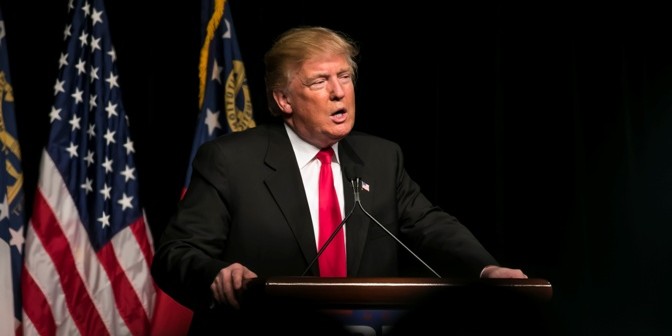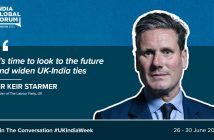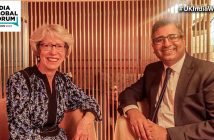The Indian PM’s visit to Washington will be crucial to determine how much the US President is in a mood to listen.
The Indian political leadership has, since Independence, rooted for a multi-polar world. Now, with Donald Trump’s US voluntarily pulling back from its role as world’s peace keeper of last resort, India is close to being granted its 70-year-old wish.
But, in keeping with the old Indian proverb that more troubles are caused by wishes that are granted than by wishes that aren’t, the new US stance is posing new challenges to the Narendra Modi government.
As he heads to the US for his first meeting with the new US President, he will try to gauge Trump’s views on a number of issues that he has invested considerable political capital on even as he tries to build a personal rapport with him a la his equations with his predecessor Barrack Obama and former British Prime Minister David Cameron.
Under Modi, India has overcome much of the “hesitations of history” and built a solid edifice of cooperation based on mutual interests on the foundations laid by Atal Bihari Vajpayee and Manmohan Singh.
But do the conditions on which the new warmth is premised still hold under Trump?
The most important concern for the Indian Prime Minister will be the anti-outsourcing stance of the new US government. The reduction of H1B visas, which many Indian IT companies use to send tech workers to the US, is just a small sub-set of the larger problem.
Outsourced contracts from large and medium US corporations are the lifeblood of India’s $150-billion IT sector. Any unreasonable restrictions on outsourcing will not only compromise the competitiveness of American companies, it will also adversely impact job creation in India.
Modi will discuss this with Trump but is the US President in a mood to listen? Can Modi’s fabled charm and instinctive Gujarati deal-making genius bring his host around? The answer is not clear yet.
Then, the new US administration has questioned some of the basic assumptions that marked America’s leadership of the free world since the end of the Second World War. He has challenged the very basis of the so-called Washington Consensus, which was based on a mix of free trade and liberal democracy with a large part of the military costs of maintaining the global order being underwritten by the US taxpayer.
But Trump believes that the spread of free trade and unprecedented global prosperity has come at the cost of the ordinary American. He has also declared that allies and like-minded countries should bear a larger share of the cost of maintaining order around the world.
Modi, like many other Asian leaders such as Japanese Prime Minister Shinzo Abe and a few others, have invested considerable domestic political and international diplomatic capital on ensuring that Asia remains a multi-polar zone of peace even as China has increasingly flexed its new found military muscle, derived from its economic heft, to try and redesign the Asian security architecture to its own advantage.
Abe’s vision of an Arc of Democracy, stretching from South Korea and Japan in the Far East to India, with many ASEAN countries in between, standing up to the new hegemon in the region is completely in sync with the US’s “Pivot to the East”. But that is a legacy of the Obama years.
There are now very real fears that the very transactional US President may prefer to cut a trade deal that brings jobs to America with China in return for tacitly accepting that Asia is Beijing’s sphere of influence.
Most American defence and security experts have warned Trump against such a course of action. Indeed, many influential law makers on Capitol Hill have argued vehemently against such policy U-turn. But there are as yet no indications that the US President is listening.
This is another foreign policy headache Modi will have to deal with.
Then, over the past few years, India and the US have engaged in several sector-specific dialogues to deepen the bilateral relationship and promote greater security in Asia. In fact, India holds more such dialogues with the US than with any other country. There is no clarity yet on the Trump administration’s thinking on those issues.
But the Indian Prime Minister has, first as the Chief Minister of Gujarat and then as head of the Indian government, shown an ability to think on his feet and come up with out of the box proposals that lead to win-win outcomes.
He has also displayed a unique ability to strike a warm personal rapport with a diverse set of world leaders such as Obama, Abe, Cameron, Russian President Vladimir Putin and even his Pakistani counterpart Nawaz Sharif. Can he do the same with a maverick like Trump?
A large chunk of India’s foreign policy matrix could well hang on that thin thread.







